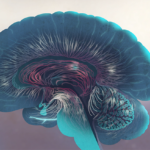Since the discovery of the first amyotrophic lateral sclerosis (ALS) gene in the early 1990s, research has only yielded the approval of two drug treatments for the neurodegenerative disease.
But in new research released in the journal EBioMedicine, a coalition of researchers at the University of Liverpool and Nagoya University, uncovered new drug candidates with promising therapeutic potential for the treatment of ALS, commonly referred to as motor neurone disease.
ALS, by definition, is a progressive neurological condition resulting in the death of neurons involved in the controlling of voluntary muscles. There is no cure in existence for ALS, but riluzole and edaravone have been used to combat the disease.
In their new study, the research team developed ebselen-based compounds with stabilized improvements in superoxide dismutase (SOD1), a protein implicated in some instances of ALS. The compounds were also associated with in vitro therapeutic effects, demonstrating substantially better potency compared to the treatment edaravone.
“We have utilised the ebselen template to develop novel compounds that redeem stability of mutant SOD1 dimer and prevent aggregation,” the research team explained in their research paper.
“Binding modes of compounds have been visualised by crystallography. In vitro neuroprotection and toxicity of lead compounds have been performed in mouse neuronal cells and disease onset delay of ebselen has been demonstrated in transgenic ALS mice model,” they also stated.
“We have developed a number of ebselen-based compounds with improvements in A4V SOD1 stabilisation and in vitro therapeutic effects with significantly better potency than edaravone.”
According to researchers, the findings point to a potential new class of drug candidates in the near future for the treatment of ALS.
“The potential of this class of compounds may offer an alternative therapeutic agent for ALS treatment,” researchers concluded in their paper. “The ability of these compounds to target cysteine 111 in SOD may have wider therapeutic applications targeting cysteines of enzymes involved in pathogenic and viral diseases including main protease of SARS-Cov-2.”


